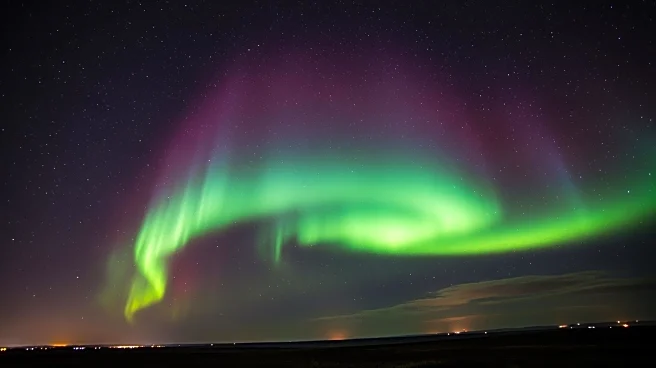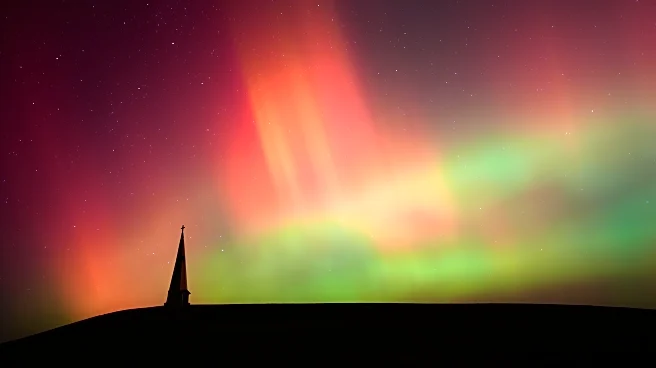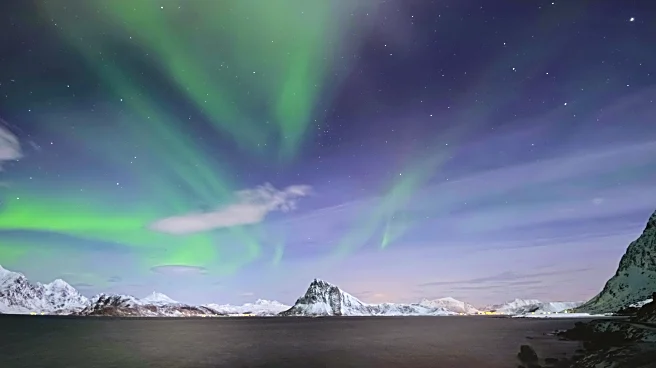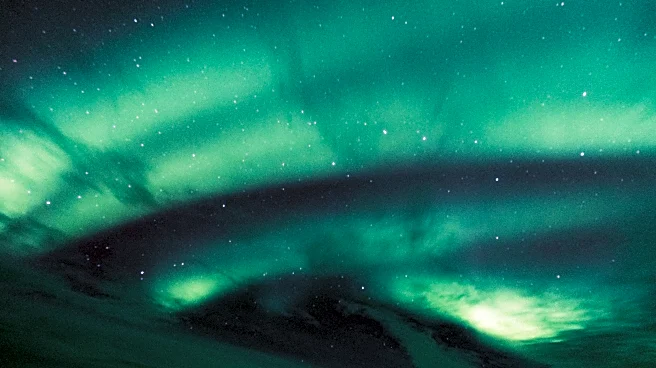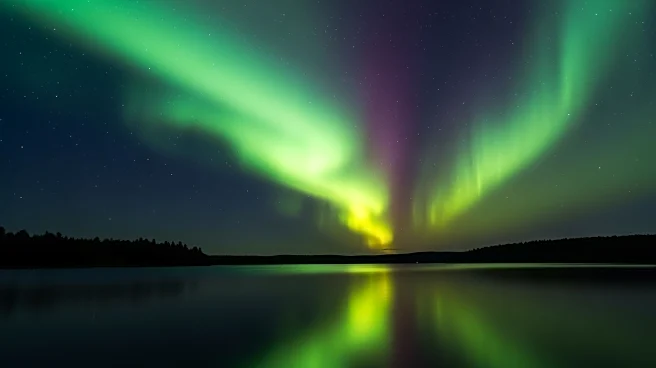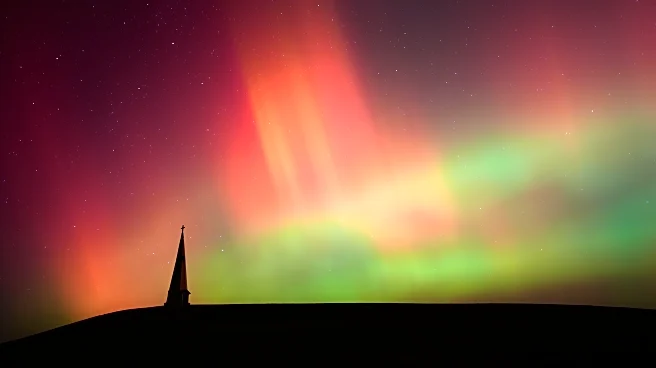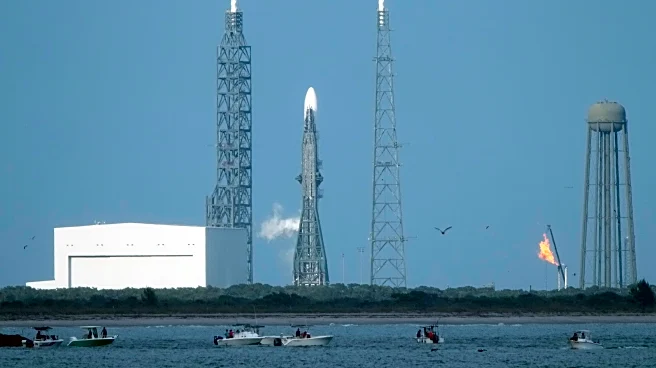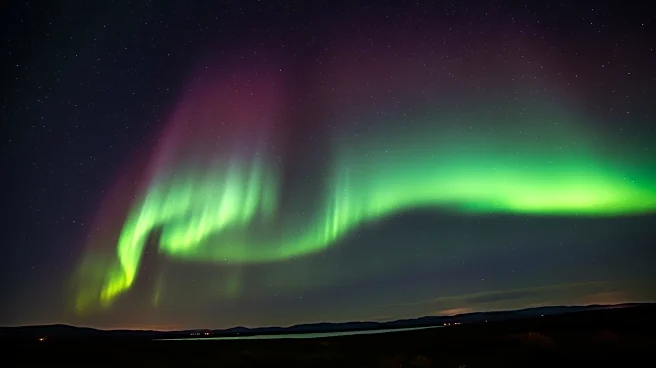What's Happening?
The National Oceanic and Atmospheric Administration (NOAA) has forecasted that the Northern Lights, or aurora borealis, could be visible across nearly two dozen states in the U.S. on November 12. This
prediction follows a coronal mass ejection from the sun, which is expected to reach Earth around midday, causing increased geomagnetic activity. The aurora borealis is a natural phenomenon resulting from the interaction between the sun's plasma and Earth's magnetic field, projecting colorful lights in the night sky. The best viewing times are generally within an hour or two of midnight.
Why It's Important?
The visibility of the Northern Lights across a wide range of U.S. states is significant as it offers a rare opportunity for millions of Americans to witness this natural spectacle. The event highlights the impact of solar activity on Earth's atmosphere and provides an educational moment about space weather phenomena. Additionally, it may boost local tourism in areas where the aurora is visible, as people travel to experience the event. The increased geomagnetic activity could also have implications for satellite operations and communication systems.
What's Next?
As the solar particles continue to interact with Earth's atmosphere, NOAA's Space Weather Prediction Center will monitor the geomagnetic activity levels. The aurora's visibility will depend on weather conditions, with clear skies offering the best chance to see the lights. Observers are advised to find dark locations away from city lights for optimal viewing. The event may prompt further studies into solar activity and its effects on Earth, potentially influencing future space weather forecasting.
